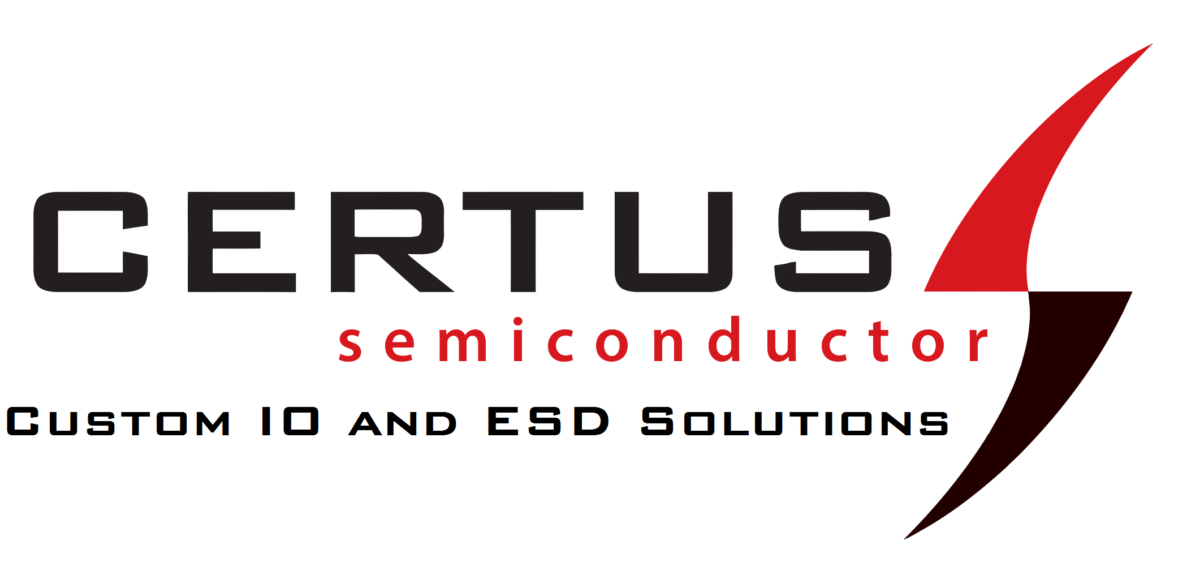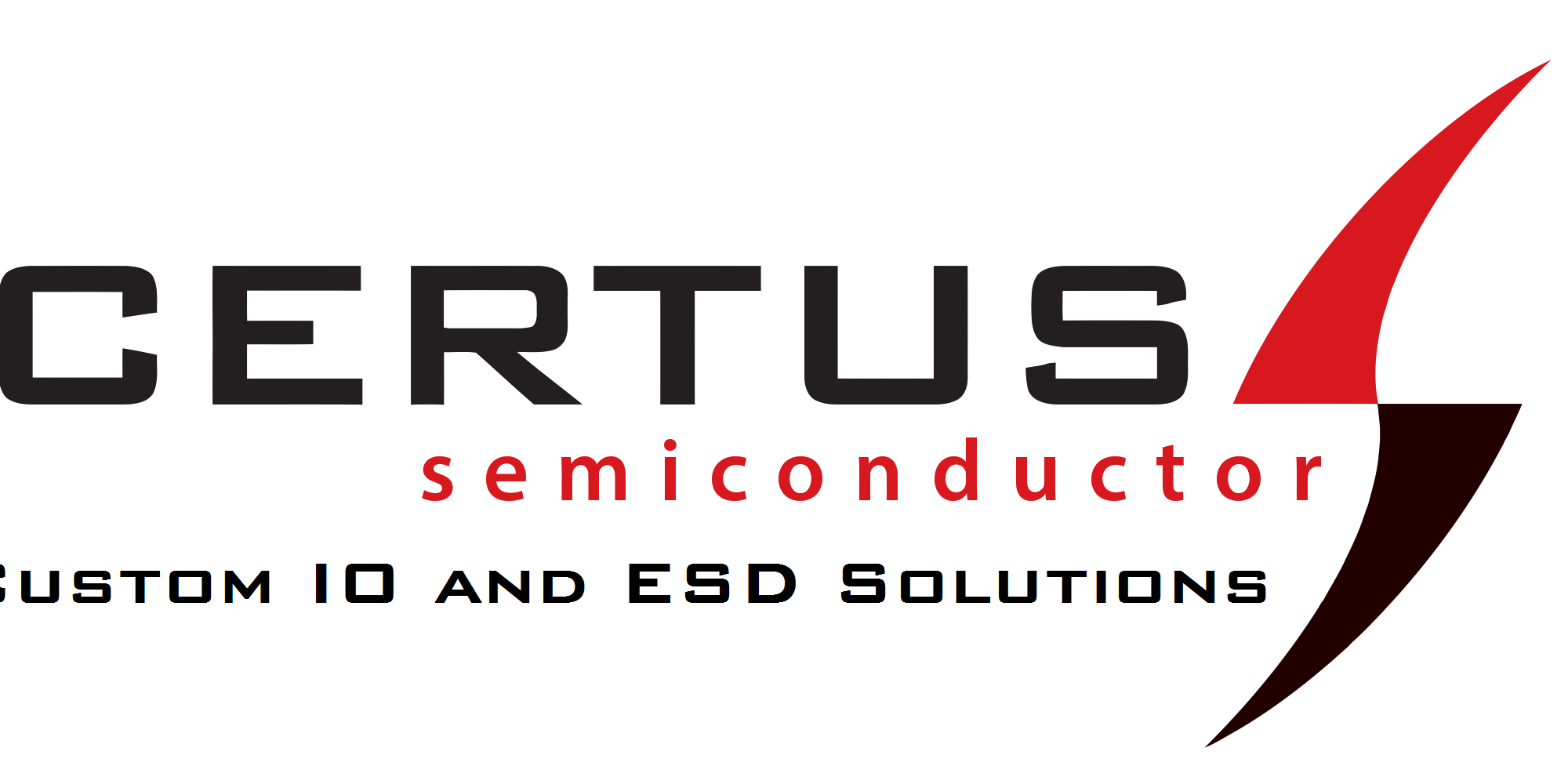
Certus Semiconductor is a unique company. Their customer centric business model ensures customer success at many levels. Certus is staffed by a team of IO and ESD experts that go above and beyond what you can get from free libraries, protecting your designs and your customers products from the risks of electrostatic discharge.
Tell us a little bit about yourself and your company.
My name is Stephen Fairbanks; I am classically trained as a semiconductor analog and RF circuit designer, specializing in designing and developing process-specific I/O and ESD libraries for over 25 years. I led the development of the ESD and I/O libraries for Intel’s wireless, cellular, and mobile computing groups for many years in the early 2000’s. I have been an ESD and I/O consultant since leaving Intel in 2006 as part of SRF Technologies. In 2009, I established Certus Semiconductor in partnership with Freescale’s I/O and ESD teams and Markus Mergens of QPX. When NXP acquired Freescale, the partnership dissolved, but I maintained the rights to the Certus Semiconductor brand and continued building the business, which has been quite a journey. Certus Semiconductor has expanded its IP offerings to include I/O libraries and ESD solutions in many foundries from 180nm to 11nm, with current research and development into more advanced nodes.
What was the most exciting high point of 2023 for your company?
The year 2023 was a great one for Certus Semiconductor. We were fortunate to sign the most contracts of any year since inception, onboarding several key new customers and signing new contracts with several long-term customers. Aside from the sheer volume of deals, the year’s high point was entering into a partnership with a new foundry to develop foundational IP for key process nodes. While Certus has a long history of developing I/O libraries for foundries, this will be the first time we have built a standard cell low-leakage library and our standard foundational IO Library IP. We’re excited to establish a long-term relationship with a foundry and develop their IP offerings.
What was the biggest challenge your company faced in 2023?
With the growth we experienced in 2023, we faced the challenge that all small businesses eventually have to face: learning how to scale. In years prior, Certus had not taken on so many projects or engaged with so many customers. This growth has led us to expand the team and improve the efficiency of our processes.
How is your company’s work addressing this growth?
We have addressed our growing pains in several ways. We have expanded the team, hiring several vital individuals. We brought on a COO towards the end of 2022 and onboarded some new additions to the engineering team in 2023. In addition to expanding the team, we have forced ourselves to become more formal in our internal and external procedures to Certus. The number of new projects we signed in 2023 has forced us to modify and update how we were doing things, which is all part of learning and growing a business. However, the key to this growth is maintaining responsiveness, agility, and flexibility in serving our customers. We have always taken great pride in being able to work with customers to optimize our solutions for their products. This responsiveness always requires a significant level of iterative interaction; we do not want to lose this. Still, being nimble and flexible as support teams grow is challenging.
What do you think the biggest growth area for 2024 will be, and why?
We see our most significant growth area in 2024 as expanding our LVDS portfolio and our multi-protocol GPIO Libraries. We have developed specialized LVDS IP in several foundries and in many process nodes ranging from 130nm and 65nm down to 12nm. This is not your standard multi-gigabit SerDes; there are many good companies in this space, and we collaborate with many of them. We are not attempting to compete with them. Instead, our LVDS is specialized for applications such as radiation-hardened Spacewire, reliability-hardened LVDS interfaces for Industrial products, or ultra-low power IoT spaces as well. We have also developed a few specialized ultra-low power LVDS interfaces for die-to-die interconnect.
In addition to this, our multi-voltage/multi-protocol I/O Libraries see increased interest. Customers are looking to create flexible I/O banks that can interface to many possible standards, including I3C, I2C, DDC, HPD, AVI, SPI, eMMc, ONFI, RGMII, etc., and at many voltages, ranging from 0.9V to 3.3V, and even 5V, all with a single I/O design. Creating these flexible I/O banks is a design space we have become very adept at.
What conferences did you attend in 2023, and how was the traffic?
We attended several conferences last year. We attended DAC for the third year in a row and were pleased with the traffic we received. We were also able to see old colleagues and build new relationships. I presented at the Siemens U2U conference, discussing Certus’ experiences and successes utilizing the Siemens Analog FastSPICE platform. Additionally, Certus received the opportunity to present at the TSMC OIP Ecosystem Forum in Santa Clara, California, and Tokyo, Japan. I presented, in partnership with Siemens, on the topics of High Voltage (>10V) RF and Analog Interfaces for Standard Low Voltage CMOS TSMC Processes and Multi-Protocal and Electrical I/O Flexibility Catered for Automotive and Mobile Applications.
Will you attend conferences in 2024? Same or more?
We will return to DAC in 2024, this time with a larger space. We hope to have equal or more traffic than last year, reconnect with old colleagues, and build new relationships. We will also be attending GOMACTech in March. It will be our first time attending, so we hope to have some good traffic and build new relationships.
Additional questions or final comments?
As Certus grows, we look to continue improving our IP and developing new leading-edge solutions at existing and smaller nodes. We aspire to be the go-to provider for I/O and ESD solutions. We enjoy working closely with our customers and always want to engage with other forward-thinking companies. Contact info@certus-semi.com or visit us at www.certus-semi.com to get started!
Also Read:
Unique IO & ESD Solutions @ DAC 2023!
The Opportunity Costs of using foundry I/O vs. high-performance custom I/O Libraries
CEO Interview: Stephen Fairbanks of Certus Semiconductor
Share this post via:





Comments
There are no comments yet.
You must register or log in to view/post comments.